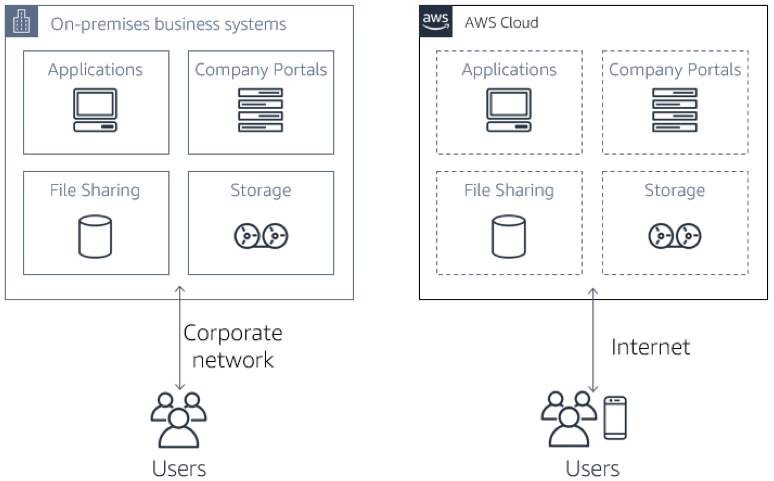Get to Know Cloud Computing with AWS
Learning Objectives
After completing this unit, you’ll be able to:
- Differentiate between cloud computing and on-premises deployments.
- Define cloud computing with the AWS Cloud.
If you are new to AWS, then you are in the right place. In this module, you learn the basics of cloud computing and get an introduction to the AWS Cloud.
Let’s start with the basics.
What Is Cloud Computing?
Cloud computing refers to the on-demand delivery of information technology (IT) resources via the Internet with pay-as-you-go pricing. Instead of buying, owning, and maintaining your own data centers and servers, organizations can acquire technology such as compute power, storage, databases, and other services on an as-needed basis.
Think of how you can flip a switch to turn on lights in your home and the power company sends the electricity. It’s like that.
On-Premises Infrastructure Versus Cloud Computing
In a traditional IT environment, all the physical components required to run your systems are owned, operated, maintained, and housed on-premises. However, hardware requires a large up-front investment to procure and continual expense and effort to maintain. The cost, complexity, and time required to expand or alter an on-premises infrastructure can slow or even stop you from experimenting with new processes or systems.
That means less innovation. It also often means less growth.
Companies are vying to be more agile. There are three factors that influence agility.
- Speed
- Experimentation
- Culture of innovation
Cloud computing has become the ideal solution to achieve those needs.
In an on-premises environment, you connect and log on to the corporate network to access resources such as applications, file sharing, and storage. With cloud computing, virtual technology provides access to the same or similar IT resources through the Internet.

What Is AWS?
AWS is a cloud computing platform that owns and maintains the network-connected hardware, like servers, that you can use to power your business. You can access servers, databases, storage, and higher-level application components in seconds. You can treat these as temporary and disposable resources, free from the inflexibility and constraints of a fixed and finite IT infrastructure.
With the AWS Cloud, development, testing, security, delivery, and capacity planning is more agile and efficient. You can reduce risks, automatically scale your computing, ensure reliable coverage even in the face of a natural disaster, and secure your data. You learn more about the benefits of the AWS Cloud later in this module.
Today, AWS supports millions of customers in diverse industries, including healthcare, media, financial services, insurance, real estate, education, and the public sector.
Agility
IT has rapidly evolved from monolithic on-premises problems to agile cloud solutions. Your application development needs agility and cannot wait for a long drawn-out IT supply chain process. The cloud makes it easy and fast to access a broad range of technology on-demand without contracts, and you only pay for what you use. As a result, you can quickly develop and roll out new applications, and you can experiment and innovate more quickly and frequently.
Throughout this module, you learn more about specific components of the AWS Cloud.
